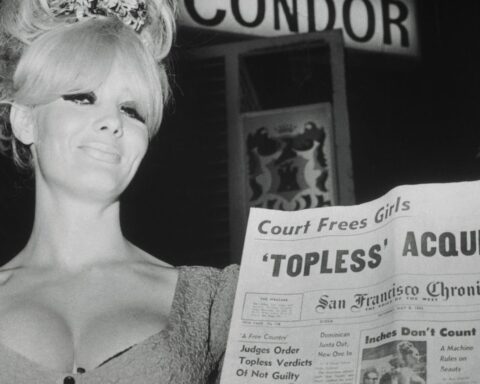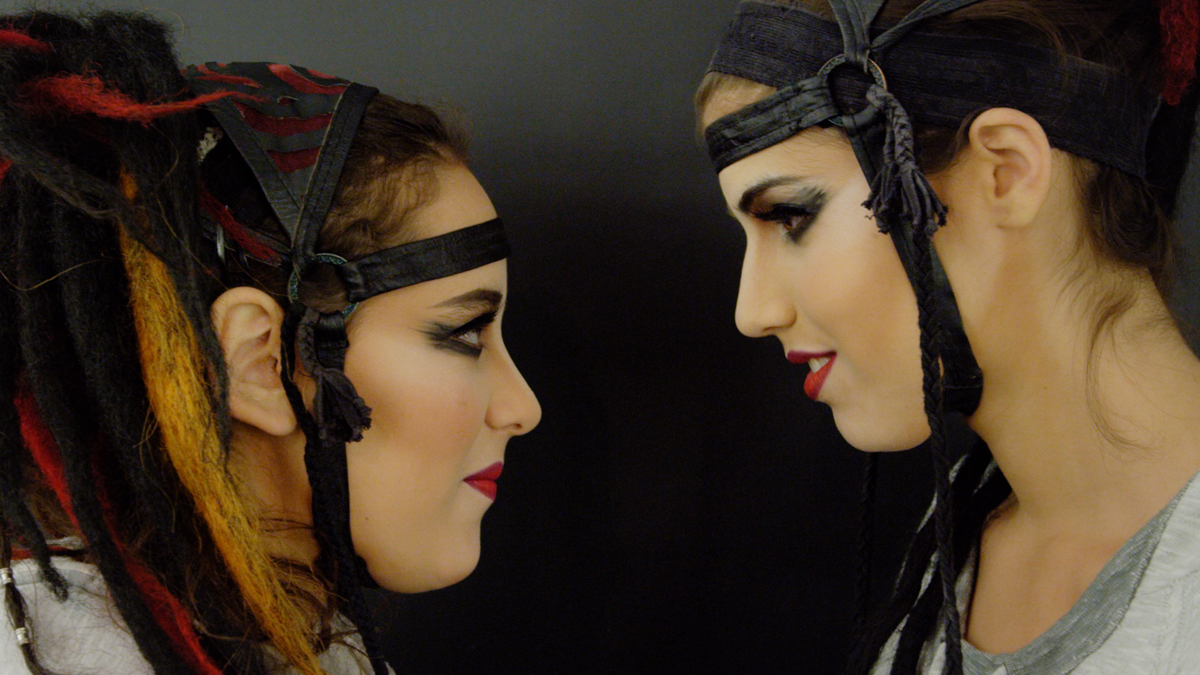Westwood: Punk, Icon, Activist
(UK, 80 min.)
Dir. Lorna Tucker
Vivienne Westwood seems like a real pain in the ass. It would be an understatement to call her a difficult subject. She doesn’t want to talk about America. She doesn’t want to talk about the Sex Pistols. When director Lorna Tucker interviews Westwood in a set-up that could be the backdrop for a Vanity Fair spread, she amplifies her squirmy restlessness by preceding each response with a fatigued whine. “It’s all so boring,” Westwood quips, insisting that there are better things to talk about than her, although she’ll gab endlessly about herself if one massages her just right. Forget clothes or the environment, Vivienne Westwood’s favourite subject is obviously Vivienne Westwood.
Westwood reportedly isn’t happy with this documentary, having released a statement via Twitter following the film’s Sundance premiere, and it’s easy to see why. Westwood: Icon, Punk, Activist chronicles the career of the subversive British fashion designer from her days shaking up the punk scene to her present success as a global brand. Tucker eschews celebrity profile hagiography to provide a fuller and fairer portrait of Westwood. That’s exactly why the film works: Westwood isn’t just another bullshit puff piece.
Tucker deserves full praise for gaining access to Westwood’s life and workspace, and for keeping the cameras rolling as the fashionista natters about like a space cadet. She seizes some great moments, like a snippet in which Westwood berates an underling for the width of a hem or a scene in which she pauses during a meeting to embarrass an employee whom a client (or she) deemed unprepared for a presentation. These episodes, skillfully edited by Paul Carlin amidst the range of whiny and self-congratulatory interviews with Westwood and her bratty beau Andreas Kronthaler, show the style maven’s empire to be an unruly mess.
As the camera rolls, Tucker captures moments of jaw-dropping unprofessionalism, like a scene in which Westwood flounders during a presentation for the managers of her worldwide franchise and Kronthaler overshadows her with a burst of flamboyantly toxic machismo and plays the blame game on unseen third parties. The reaction shots of their dumbstruck store managers are priceless. Little accountability yields lots of drama.
The doc nevertheless conveys how Westwood has somehow persevered and exploded as brand despite her scatterbrained business sense and iconoclastic designs. When Westwood is willing to talk intelligently about her own work, she is wonderfully revealing. (Tucker also interviews a fashion historian who explains the worth of Westwood designs housed in an archive.) Westwood opens up about using clothes as anti-establishment tools during the punk days, and her reflections on a career as an outsider implore one to admire her success. Few independent producers find such longevity without compromising the signatures that inspired their fan bases. Westwood is very frank that the growth of her brand has compromised the quality of her work and Tucker provides evidence that supports this sentiment. Even better are the scenes where Westwood takes control of her brand integrity by calling out anyone who lets a stitch slip.
A snippet of the doc deals with Westwood’s environmental activism; however, it feels breezily tacked on and underdeveloped. (This aspect is the one with which Westwood takes particular issue.) Tucker captures Westwood visiting the North Pole—in fancy suede shoes and photo-op ready wardrobe—as she talks in voiceover about her concerns over global warming. A few other scenes convey how Westwood incorporates green messages into her fashion shows and uses her celebrityhood to engage with the public. However, her activism looks like a fad, due to the the way it appears clumsily in the film—as if it’s an obligation. Unfortunately, Tucker doesn’t address the garment industry’s own culpability in global waste with current fashion items using toxic chemicals while last year’s clothing designs are discarded into rivers and landfills worldwide.
Despite the flaws of Westwood the film and Westwood the person, Tucker’s doc inspires one to admire the designer’s longevity and autonomy. Westwood’s designs might resemble haute couture clown costumes in the eye of some beholders and the best piece of archival footage harnesses this impression to illustrate Westwood’s doggedness. It comes from the British talk show Wogan in which Westwood kept a brave face as the audience collectively laughed at her designs. One guffaw followed another, yet the film sees Westwood stoically defending her clothes when even host Sue Lawley couldn’t resist a giggle. The film shows how an artist can find success by sticking to her vision, tuning out the critics, and developing her style with her fans. Whatever one makes of her as a film subject, Westwood ensures one cannot deny the merits of this fashionista’s success.
Westwood: Punk, Icon, Activist opens June 29 in Toronto at Hot Docs Ted Rogers Cinema and TIFF Lightbox, and in Vancouver at Vancity Theatre.











